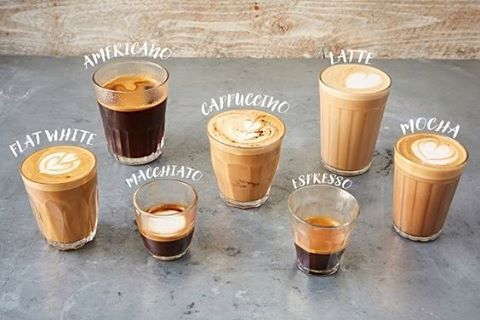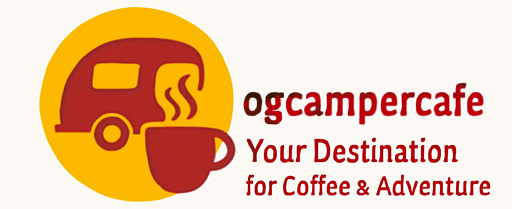
Adding Milk to Coffee in Diner Lingo: A Guide to Ordering Like a Pro
The quintessential American diner: a place of comfort, nostalgia, and, of course, coffee. But navigating the world of diner coffee can be a linguistic adventure. One of the most common requests, adding milk to coffee, has its own specific vernacular. This article delves into the art of ordering coffee with milk in diner lingo, ensuring you can confidently request your caffeine fix like a seasoned pro.
The diner, a cultural institution, has a language all its own. From the short-order cook calling out the orders to the waitress refilling your cup, the diner experience is a symphony of sounds and phrases. Understanding this language, particularly when it comes to your morning coffee, can elevate your diner experience. This guide will decipher the common terms and phrases used when ordering coffee with milk, helping you avoid any confusion and get exactly what you want.
Decoding the Diner Coffee Code: Milk Preferences
The most straightforward way to order coffee with milk is to simply ask for it. However, diner culture thrives on efficiency and brevity. Therefore, specific phrases have developed to streamline the ordering process. Let’s break down the most common ways to request milk in your coffee:
- Coffee with Milk: This is the most basic and universally understood request. It’s perfectly acceptable, but not necessarily the most ‘diner-authentic.’
- Coffee, Milk In: This is a slight variation, emphasizing the addition of milk. It’s a clear and concise way to communicate your preference.
- Coffee with Cream: While often used interchangeably with milk, the term ‘cream’ generally refers to a richer, higher-fat option. Be prepared to specify what type of cream you prefer if available (e.g., half-and-half, heavy cream).
- Coffee, Light & Sweet: This is a more complex order, indicating you want milk (or cream) and sugar. The ‘light’ refers to the amount of milk/cream, implying a lighter color to the coffee.
The key takeaway is to be clear and direct. Diner staff are accustomed to a fast-paced environment, so clear communication is essential. The more explicit you are about adding milk to coffee, the better.
Beyond the Basics: Variations and Considerations
The diner experience is all about customization. Understanding the variations in how people order coffee with milk can further enhance your ordering prowess.
- Type of Milk: While whole milk is standard, some diners may offer alternatives like skim milk, soy milk, or almond milk. It’s always wise to ask if specific options are available.
- Amount of Milk: “Light” is a common term for a smaller amount of milk. If you want a lot of milk, you could say “extra milk” or “milk on the side.”
- Sweetener Preferences: As mentioned earlier, “light & sweet” indicates milk and sugar. If you prefer a different sweetener, such as artificial sweetener, be sure to specify this clearly.
- Coffee Temperature: While not directly related to adding milk to coffee, it’s worth noting that diners often serve coffee at a high temperature. If you prefer a cooler coffee, you can request a “lukewarm” or “warm” cup.
Adding milk to coffee is a simple request, but the nuances of diner lingo can make it more complex. Being aware of these variations allows you to tailor your order to your exact preferences.
The History and Culture of Diner Coffee
The American diner is more than just a place to eat; it’s a cultural touchstone. The tradition of serving coffee with milk, and the language surrounding it, is deeply ingrained in diner culture. This tradition has evolved over decades, reflecting the changing tastes and preferences of American society.
The rise of diners coincided with the growth of the American coffee industry. Coffee became a staple, a social lubricant, and a source of energy for workers and travelers. The availability of milk, initially limited, became more widespread, leading to the ubiquitous practice of adding milk to coffee. This practice, and its associated lingo, became synonymous with the diner experience.
The diner has also served as a melting pot of cultures. Immigrants, often starting businesses, adopted and adapted to American customs, including the unique language of the diner. This continuous evolution has made the language of the diner a living, breathing entity, reflecting the diverse experiences of its patrons.
Mastering the Diner Coffee Order: A Step-by-Step Guide
Let’s put it all together. Here’s a step-by-step guide to ordering coffee with milk in a diner, ensuring you sound like a local:
- Approach the counter or wait for your server. Make eye contact and be ready to place your order.
- Order your coffee. You can start with “Coffee, please.”
- Specify your milk preference. Use one of the phrases we’ve discussed: “Coffee, milk in,” “Coffee with milk,” or “Coffee with cream.” If you have a specific type of milk preference, mention it.
- Specify sweetener, if desired. If you want sugar, say “light & sweet” or specify the type of sweetener.
- Confirm your order. Repeat your order back to the server to ensure accuracy.
- Enjoy your coffee! Savor the taste of your perfectly customized cup.
By following these steps, you’ll be well on your way to ordering coffee with milk like a seasoned diner patron.
Common Mistakes to Avoid When Ordering Coffee With Milk
Even experienced diner-goers can make mistakes. Here are some common pitfalls to avoid when ordering coffee with milk:
- Being Vague: Avoid ambiguous phrases like “coffee with something.” Be specific about your milk preference.
- Over-Complicating the Order: Keep it simple. Unless you have specific dietary restrictions or preferences, stick to the basic phrases.
- Not Paying Attention: Listen carefully to the server and repeat your order to confirm accuracy.
- Being Impatient: Diners are busy places. Be patient and understanding, and the staff will likely appreciate your courtesy.
Avoiding these mistakes will help you to have a smooth and enjoyable diner experience.
Why Diner Lingo Matters: More Than Just Coffee
Understanding diner lingo, especially when it comes to adding milk to coffee, is more than just about ordering a drink. It’s about appreciating a unique cultural phenomenon. It’s about respecting the traditions and customs of a specific place and time. It’s about connecting with the community and feeling like a part of something bigger.
The language used to order coffee with milk in diners is part of the overall experience. It adds a layer of authenticity and charm. It’s a reminder of the history, the culture, and the people who have shaped the American diner.
The Future of Diner Coffee and Its Lingo
The diner, like all cultural institutions, is constantly evolving. While the core traditions remain, there’s always room for change and adaptation. The future of diner coffee, and the language surrounding it, is likely to reflect the evolving preferences of its patrons.
We can expect to see more alternative milk options, such as oat milk and coconut milk. The demand for specialty coffee drinks might increase, leading to more complex orders. However, the core principle of clear and concise communication will likely remain the same. The ability to say “coffee, milk in” will still be a valuable skill for any diner enthusiast.
The act of adding milk to coffee and ordering it in the diner lingo is a simple pleasure, but it’s also a connection to a rich history and a vibrant culture. So, the next time you find yourself in a diner, remember these tips. Order your coffee with confidence, and enjoy the experience.
Whether you prefer “coffee with milk,” “coffee, milk in,” or a more customized order, the key is to communicate clearly and embrace the diner experience. Mastering the art of ordering coffee with milk in diner lingo is a small but significant step towards becoming a true diner aficionado. Embrace the diner, its coffee, and its unique language, and you’ll be well on your way to a delightful experience.
[See also: Related Article Titles]

